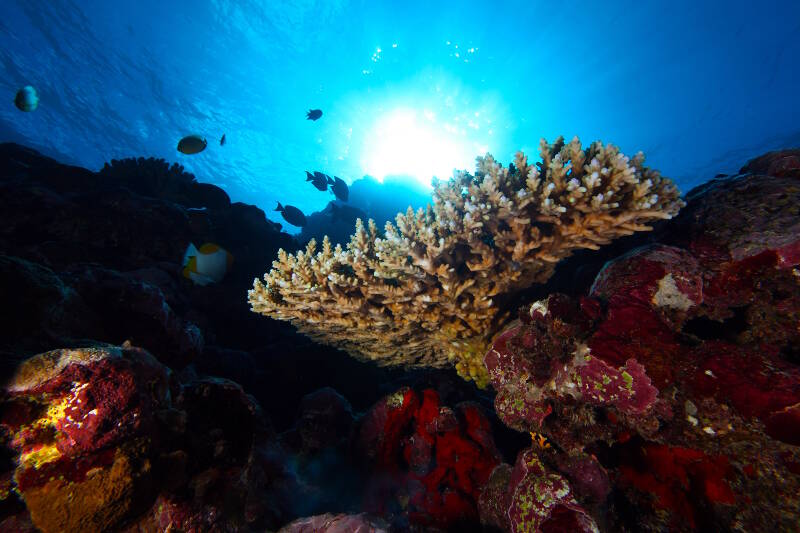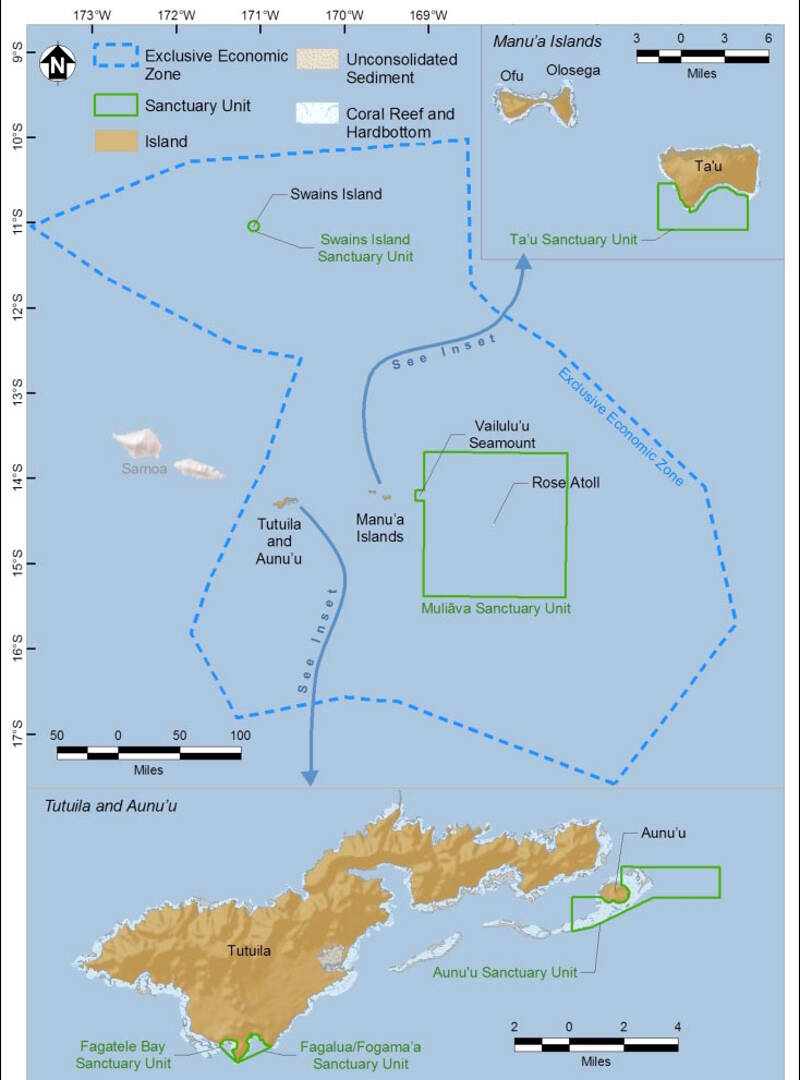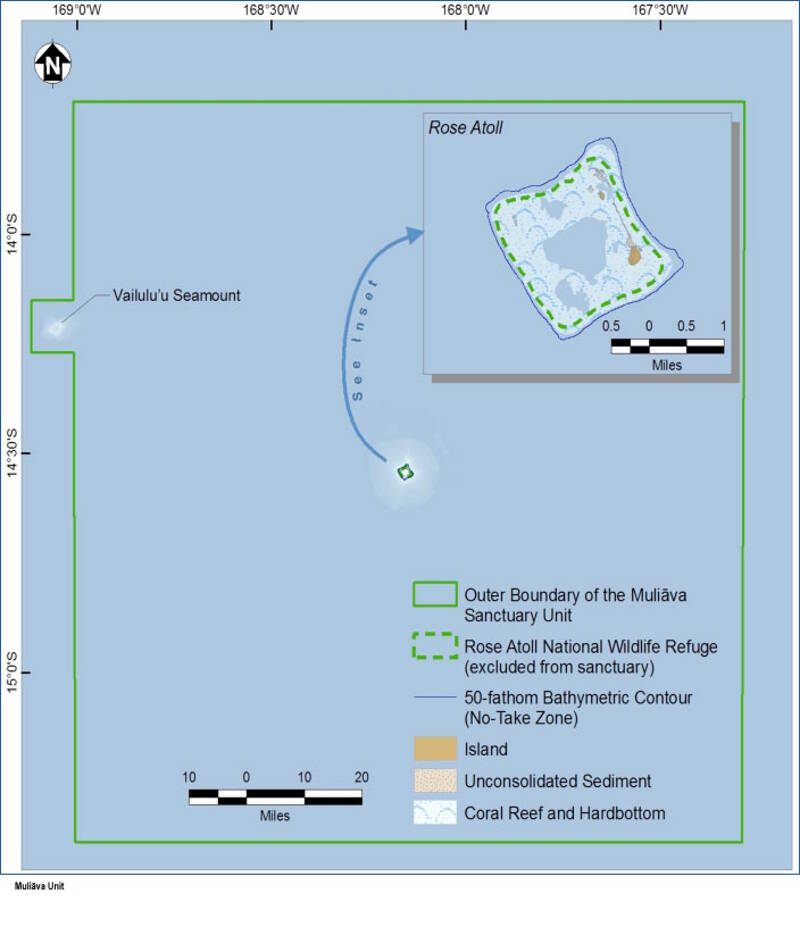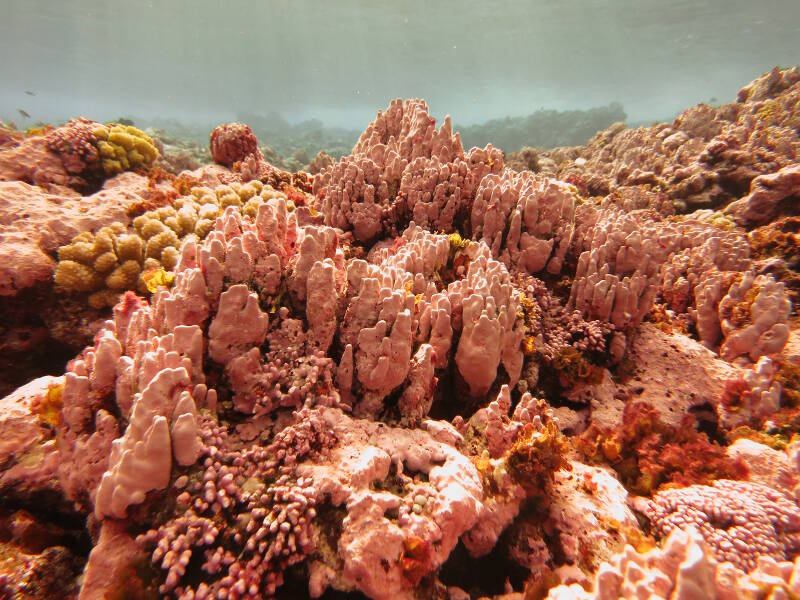
By Elizabeth Weinberg - NOAA Office of National Marine Sanctuaries

Underwater scene at National Marine Sanctuary of American Samoa. Image courtesy of Greg McFall/NOAA. Download larger version (jpg, 3.4 MB).
Located in the cradle of Polynesia’s oldest culture, National Marine Sanctuary of American Samoa covers 13,581 square miles of nearshore coral reef and offshore open ocean waters across the Samoan archipelago.
The sanctuary was designated in 1986 as the tiny, quarter-mile Fagatele Bay National Marine Sanctuary. In 2012, it expanded to the six protected areas of what is now National Marine Sanctuary of American Samoa, including the waters around Rose Atoll Marine National Monument. The sanctuary is managed by the NOAA Office of National Marine Sanctuaries and the government of American Samoa.

Map of National Marine Sanctuary of American Samoa. Image courtesy of NOAA. Download larger version (jpg, 233 KB).
Today, National Marine Sanctuary of American Samoa protects extensive coral reefs, deepwater reefs, hydrothermal vent communities, and rare marine archaeological resources. Porites coral heads in the sanctuary’s Ta’u unit are among the oldest and largest in the world: the sanctuary’s largest coral head, known as Big Momma, has a circumference of 41 meters, stands 6.4 meters tall, and is more than 500 years old. The sanctuary also encompasses fishing grounds that Samoans have depended on for generations for their livelihoods.
Human history in American Samoa dates back about 3,000 years, making the Samoan culture the oldest in Polynesia. The people of American Samoa take pride in Fa’a Samoa, or the Samoan way, and have preserved it successfully. Daily life still revolves around cultural traditions, and the people of American Samoa are bilingual in English and Samoan. National Marine Sanctuary of American Samoa works closely with communities in American Samoa, incorporating regular consultations with village councils and year-round outreach programs for all ages into its management. In many communities, such as the sanctuary area of Aunu’u, residents still rely on the reef and other natural resources for sustenance.

Map of Rose Atoll Marine National Monument. Image courtesy of NOAA. Download larger version (jpg, 168 KB).
The sanctuary’s Muliāva unit overlays the marine waters of Rose Atoll Marine National Monument and includes the Vailulu’u Seamount. The monument was established in 2009, and coordinated management is facilitated by an Intergovernmental Governing Committee consisting of NOAA Fisheries, the NOAA Office of National Marine Sanctuaries, and the U.S. Fish and Wildlife Service, in consultation with the government of American Samoa.
The easternmost Samoan island, Rose Atoll remains one of the most pristine atolls in the world. The marine environment around the atoll supports a dynamic reef ecosystem that is home to a diverse assemblage of marine species, several of which are threatened or endangered. One of the atoll’s most striking features is the pink hue of its fringing reef, which is caused by the dominance of coralline algae, the primary reef-building species in the area. The dominance of this species makes Rose Atoll’s reef quite distinctive from the reefs found at other Samoan Islands. This reef supports the highest densities of giant clam in the Samoan archipelago and and an estimated 272 species of fish. The atoll also contains nesting grounds for the endangered green sea turtle.
The area around the Rose Atoll in the sanctuary’s Muliāva unit contains coral reefs, deepwater pelagic habitat, and the Vailulu’u Seamount. Within the Vailulu’u crater is a 330-meter volcanic cone, known as Nafanua, that has been growing in recent years and is likely to breach the sea surface within decades. On the seamount cone are several types of hydrothermal vents that are biological hotspots for invertebrate communities, providing habitat for an unusual group of organisms, ranging from microbial mats to polychaete worms.
This CAPSTONE mission will contribute new information by exploring areas of the deep ocean in American Samoa for the first time. These data will enable sanctuary managers to effectively protect the wealth of ocean resources that live in the sanctuary for future generations.

The striking pink hue of the fringing reef at Rose Atoll Marine National Monument. Image courtesy of Wendy Cover/NOAA. Download larger version (jpg, 3.7 MB).